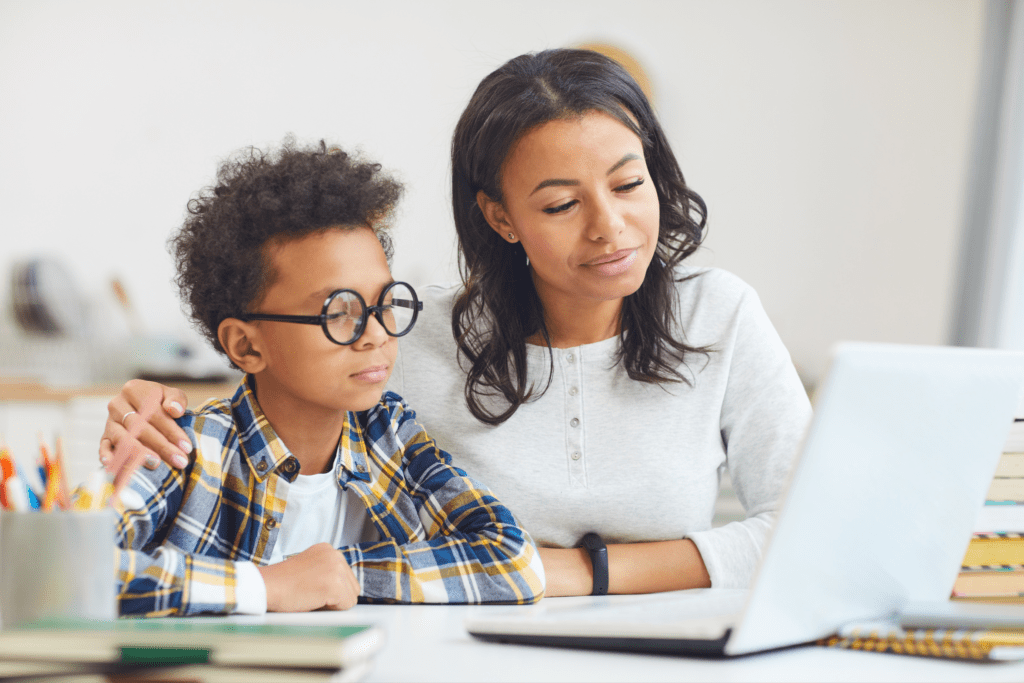How can you successfully teach online?
- Design your learning programs to keep track of what your students are doing.
- Make use of lesson time to do the things that they can’t do independently.
- Work with their parents.
- Don’t make assumptions.
We’ve all had to become experts in online learning over the last few years. Schools all across the globe have taken different approaches to online learning, and some have been more effective than others. Teachers have used various platforms and structures for teaching their students during the pandemic.
Online teaching is not something that is going to go away. Most teachers may never use it again, but many students found that this style of learning worked for them during their time learning from home. Teachers are also using the same strategies, such as flipped learning, once they get back into the classroom.
Regardless of whether you are still teaching online, think you might teach online again, or just want to broaden your repertoire, here are some key pedagogical strategies you can use when teaching your students remotely.
1. Design your learning to keep track of what your students are doing.
One of the things that I often heard from teachers who were teaching remotely during the pandemic was that their students weren’t doing any work. Or even worse, they had no idea whether they were doing the work. They would meet on Zoom or Teams for their morning lesson and then go off and complete the task that had been assigned to them. Very few of the students ever submitted the assignment.

from the very beginning.
When teaching online, you need to prioritise being able to keep an eye on what your students are doing. It needs to be one of the first things you think about because it will dictate how you deliver all of your resources and tasks to your students. Any cloud service, such as Google or Office365, has ways that you can do this. In both Google Classroom and Microsoft Teams, you can set assignments for students and auto-generate a document for each of them to work in. This means that you can flit around between their documents to see how they are working in real-time, just as you would if you were walking around the classroom.
2. Make use of lesson time to do the things that they can’t do independently.
Here is where flipped learning works with distance education. You likely don’t have much contact time with your students if you’re learning online. In some schools, teachers were expected to maintain the same timetable and be online with students almost all day, but this was not common. If you do have a lesson with your students, spend that time doing what they will struggle to do themselves.
I would highly discourage you from spending this very limited time just going through the content. Going through a set of slides and watching a video is great, but they may need you to unpack the task so that they can watch the video later. You should also consider dedicating a significant portion of your time to answering questions and having group discussions because they cannot do this once they log off to begin working.
3. Work with their parents.
I’ve found that the number one key factor in a student’s success with online learning is how on-board and supportive their parents are. In schools that do distance education all of the time, there are often extended agreements that parents need to sign before a student is enrolled. The parents need to be there to support their child, and they need to be able to work closely with the teachers.

If you’re just going online for a short time, you probably don’t have agreements like this in place. You would probably have parents who aren’t happy with the fact that their children are learning from home or find it challenging to balance their child’s learning with their other responsibilities. Just like with homework, when your students have work to do at home where you are not supervising them, it is wise to let the parents know.
Many online learning platforms allow you to add ‘parent’ or ‘supervisor’ accounts. These accounts don’t have all of the permissions as the parents and students, but they will be able to see what’s happening, and you can even bulk message these accounts if you need to. I’ve found that when working online, I called parents a lot more frequently; the main reason for this was that I wanted information about what was happening at home.
4. Don’t make assumptions.
A student could seem to have a bad lesson or suddenly log off early, and you, as the teacher, would have no idea why. You won’t know whether they’re distraught or if their internet has just cut out. Checking in with parents when teaching online is an excellent idea for getting a little more insight into what is happening with your students and quickly builds a strong relationship and trust with parents.
Many students struggled with online learning more than they thought they would. Some students, particularly the introverts, found that they really loved it and it really worked for them. When you’re not face-to-face with your students, you need to not assume what they are doing or how they are feeling.

I’ve had many students slip further and further behind when doing online learning. It’s easy to assume that they’re lazy or taking advantage of the situation. Most of them were feeling stuck and alone. It was a matter of pride for them as well, they wanted to figure it out for themselves, but I hadn’t realised that they weren’t quite ready for this task yet. They would sit staring at the task, frozen, unable to start. It’s not that they didn’t want to do it, they were just struggling to start, which knocked their confidence, and everything spiralled out of control.
To be successful as a teacher in online learning, you need to get to know your students. You need to know them not only as the student in the classroom mucking about with their mates but also as the student sitting in their room watching your lesson. They may have three younger siblings at home that they’re expected to look after while their parents are still out working. Their internet may keep cutting out, making accessing your lessons and resources hard. You need to ask questions and make the time you spend together a safe time where they can be honest. You need to not accuse or assume but work together to solve the problems you encounter.
Lessons from online learning.
Online learning was a steep learning curve for us all. While many of us won’t go back online again (at least, we hope so), there were many things that we learned which can be applied to teaching back in the classroom. Many teachers found that they enjoyed online learning, and if this is you, there are full-time distance education schools all over the place. Many of these schools are currently experiencing record enrolments as students and families suddenly see this as an option, and it has worked well for many. If you enjoyed this and would like to learn more about distance education, it may be worth looking into further.





